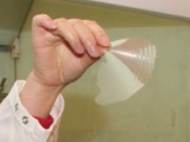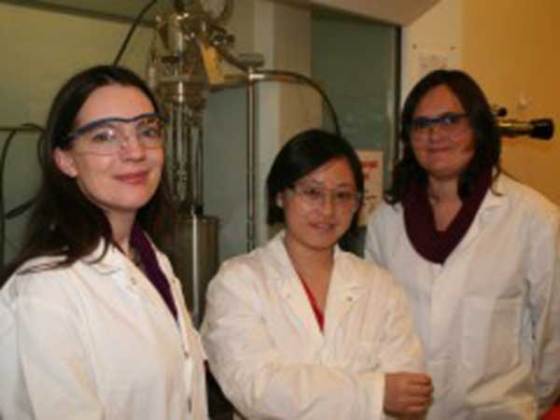New sort of plastic made from sugar can be composted
 Researchers have managed to transform sugars found in fast growing trees and grasses into plastic. Although there are already plastics on the market made from natural materials like corn, these do not biodegrade quickly. The new discovery would not only cut down on the use of oil (usually used to make plastic) but potentially enable people to compost plastic at home.
Researchers have managed to transform sugars found in fast growing trees and grasses into plastic. Although there are already plastics on the market made from natural materials like corn, these do not biodegrade quickly. The new discovery would not only cut down on the use of oil (usually used to make plastic) but potentially enable people to compost plastic at home.
Around 7% of worldwide oil and gas resources are consumed in plastics manufacture, with worldwide production exceeding 150 million tons per year. Almost 99% of plastics are formed from fossil fuels. The degradable polymer is made from sugars produced from the breakdown of lignocellulosic biomass, which comes from non-food crops such as fast-growing trees and grasses, or renewable biomass from agricultural or food waste.
It is being developed at Imperial College London by a team of Engineering and Physical Sciences Research Council scientists led by Dr Charlotte Williams. The search for greener plastics, especially for single use items such as food packaging, is the subject of significant research worldwide. “It’s spurred on not only from an environmental perspective, but also for economic and supply reasons,” explains Dr Williams.
“Our key breakthrough was in finding a way of using a non-food crop to form a polymer, as there are ethical issues around using food sources in this way”, said Williams. Current biorenewable plastics use crops such as corn or sugar beet. “For the plastic to be useful it had to be manufactured in large volumes, which was technically challenging. It took three-and-a-half years for us to hit a yield of around 80% in a low energy, low water use process”, added Williams.
This is significant as the leading biorenewable plastic, polylactide, is formed in a high energy process requiring large volumes of water. In addition, when it reaches the end of its life polylactide must be degraded in a high-temperature industrial facility. In contrast, the oxygen-rich sugars in the new polymer allow it to absorb water and degrade to harmless products. Because the new polymer can be made from cheap materials or waste products it also stacks up economically compared to petrochemical-based plastics.
The polymer has a wide range of properties, laying the field open for a larger number of applications other than biorenewable plastic packaging. Its degradable properties make it ideal for specialised medical applications such tissue regeneration, stitches and drug delivery. The polymer has been shown to be non-toxic to cells and decomposes in the body creating harmless by-products.
The team, which includes commercial partner BioCeramic Therapeutics, is investigating ways of using the material as artificial scaffolds for tissue regeneration. They are also focusing on exploiting the degradable properties of the material to release drugs into the body in a controlled way as well as the specific material characteristics needed for the packaging and medical areas.
“The development of the material is very promising and I’m optimistic that the technology could be in use within two to five years”, said Williams, who is already working with a number of commercial partners and is keen to engage others interested in the material.










can i get more information?